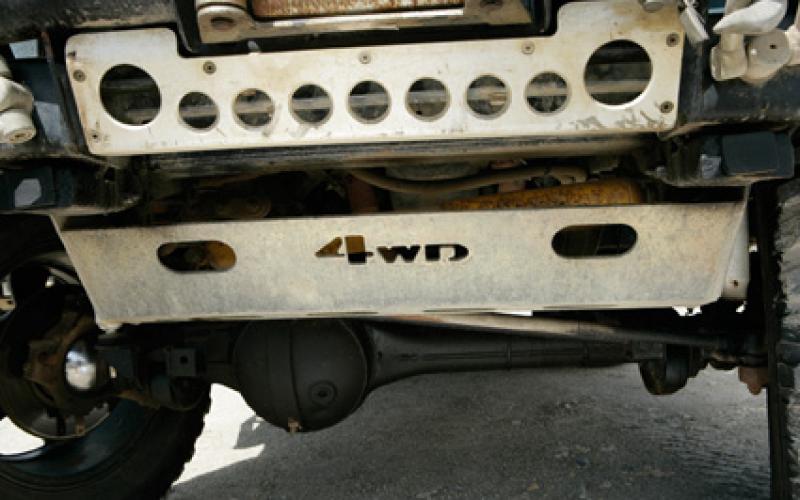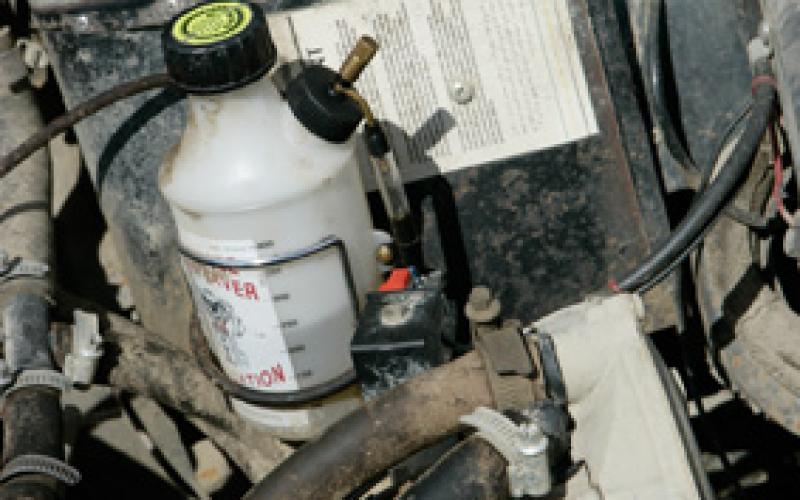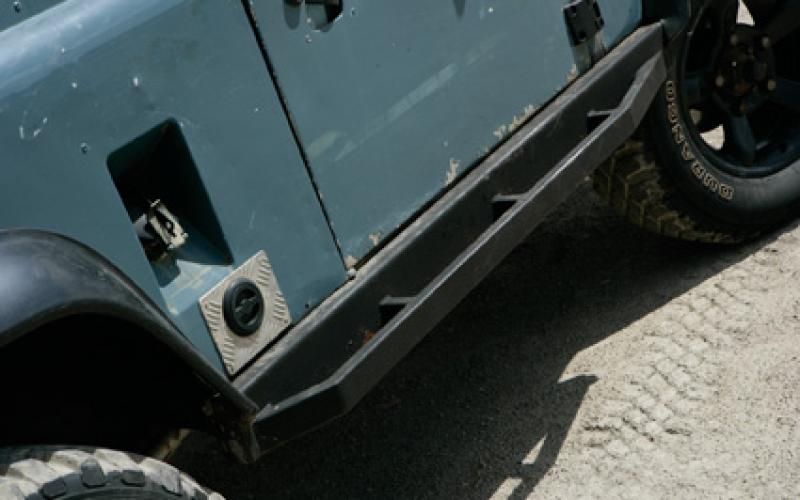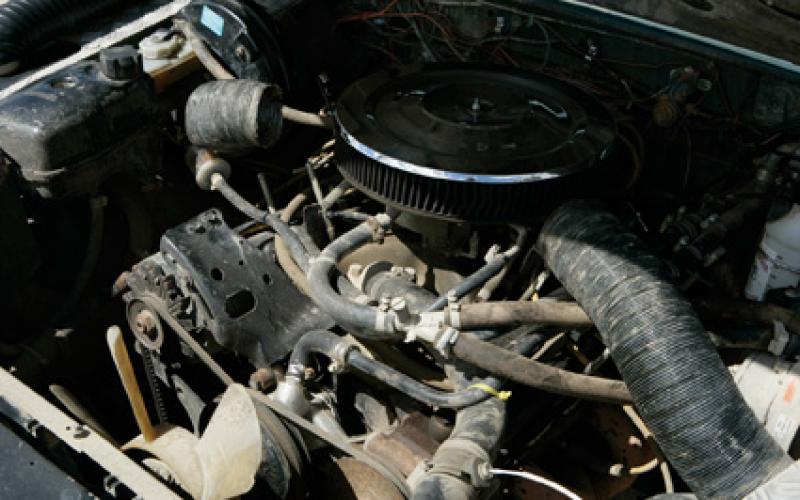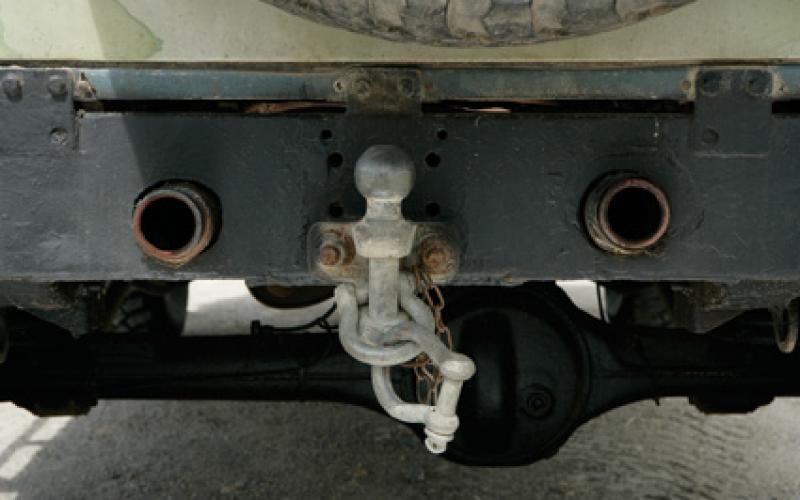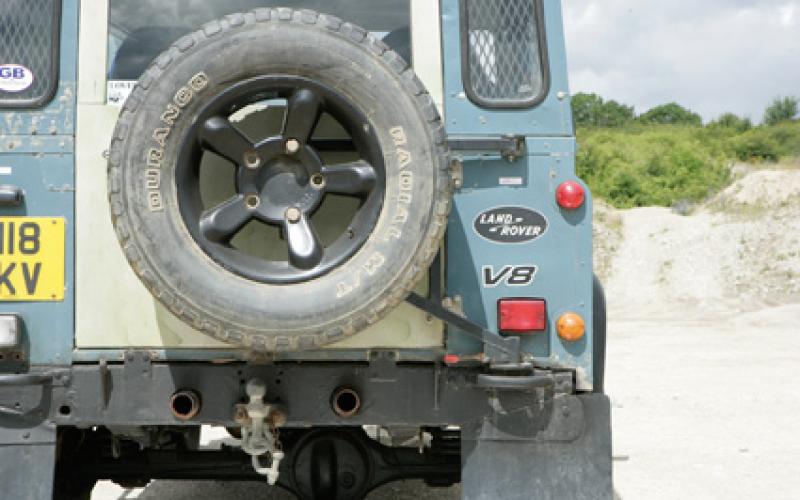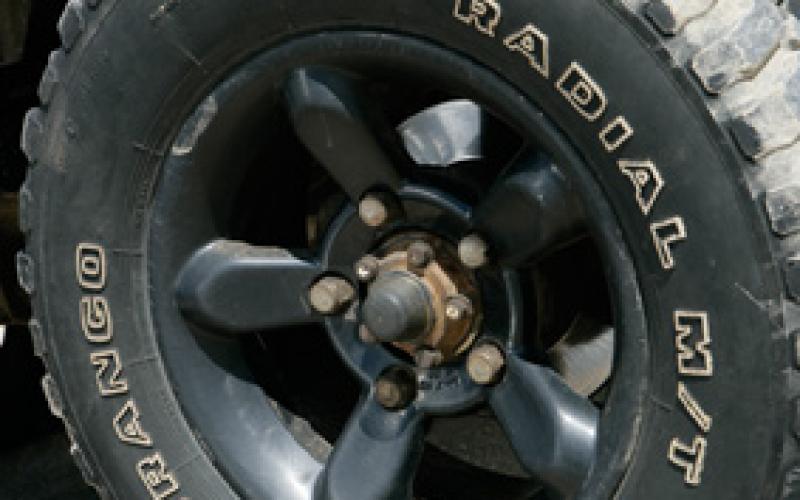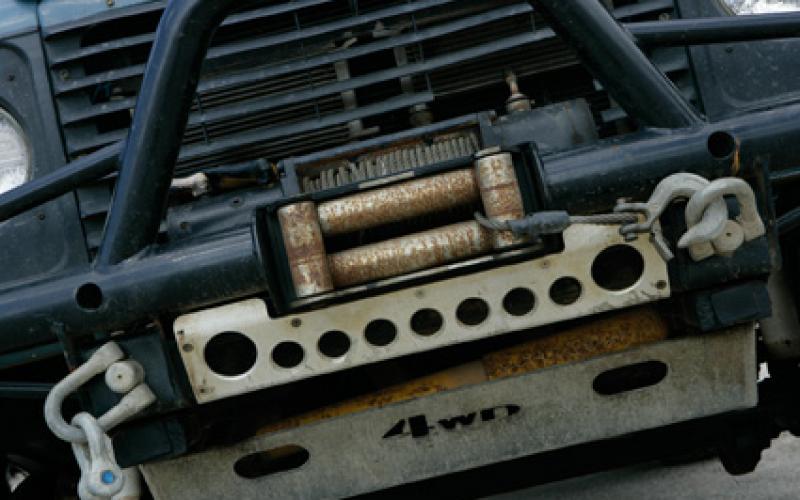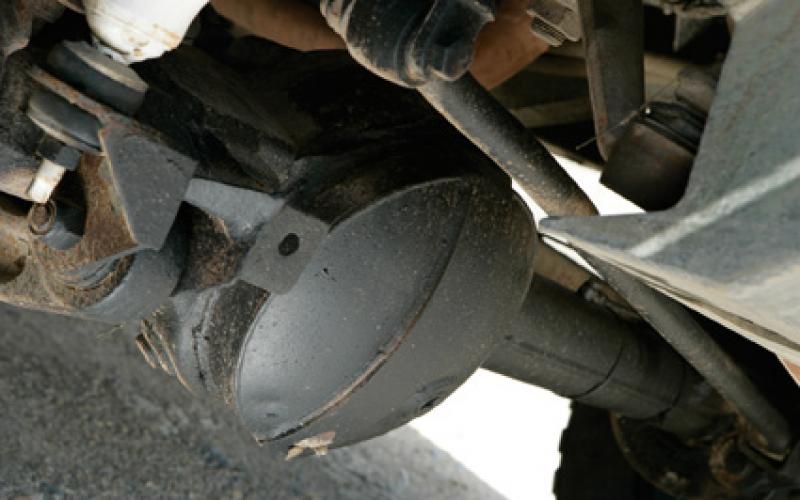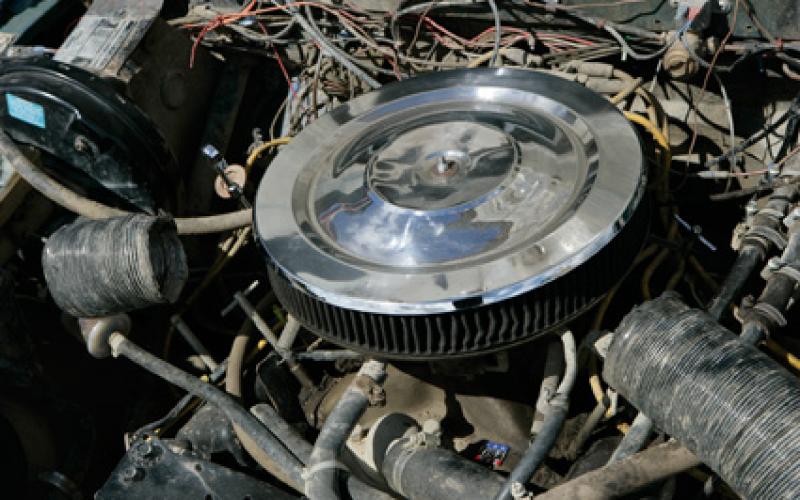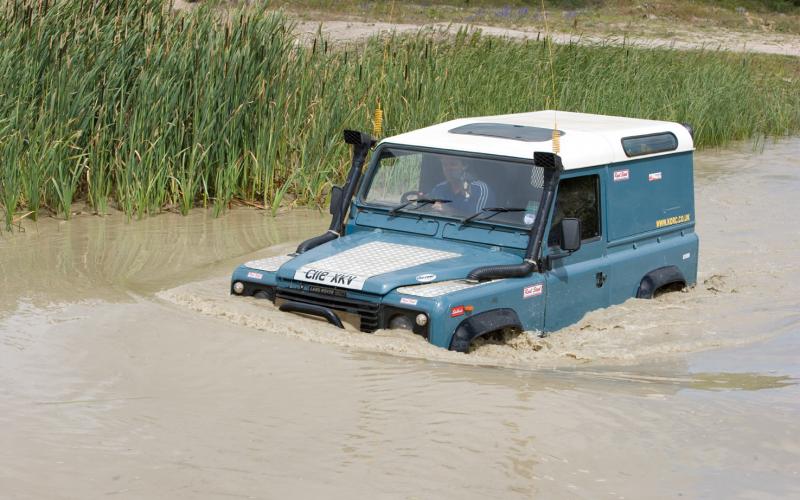Worth The Weight
Ian Jones’s 90 weighs in at a hefty 2.5 tonnes. That’s hardly a surprise when you consider that the Chevrolet V8 engine beneath the bonnet displaces 5.7 litres; but at least there’s plenty of power to shift the bulk.
If ever you want to be reminded of the curious times in which we live, I suggest you contrive to have a conversation with someone in their 80s. It’s quite easy to do this, because most people in this age category are only too willing to bend the ear of someone who shows an interest in them. And quite right too, I say. It’s somewhat hackneyed to remind ourselves that this is the generation who won the war, but that doesn’t make it any less true, or them any less deserving of our respect.
Quite apart from these issues of inter-generational relations, however, a conversation with someone who was born in the 1920s serves as an interesting anthropological wake-up call for the 21st century listener. Take the issue of how much people weigh, for example. In our size zero obsessed times, it’s easy to mistake skinniness for wellbeing. Lose a few pounds and the chances are that everyone will comment on how well you’re looking, how healthy you must be.
Everyone, that is, apart from those inhabitants of the older generations. You see, for people who lived in an era when childhood illness was common, when food was often in short supply and for whom the notion of skimming milk is regarded as akin to removing the meat from sausages, a bit of bulk is very definitely a good thing. It’s not that they’re apologists for obesity, you understand; but if a man has a chest size of less than 42 inches, the over-80s will probably assume he had diphtheria as a child.
For them, a balanced life is one in which you eat your share of fat and protein, expend plenty of energy through exercise and hard work and develop the sort of physique that leads to modern children being called ‘Fatty’ by their classmates. Broad shoulders, a decent girth and even a couple of extra chins are no bad thing - because what counts is that you’re fit and healthy, strong and powerful.
All of which brings us somewhat circuitously to Ian Jones’s modded-up Land Rover. By the standards of many modern off-roaders - including Ian’s own recently-purchased Bowler Tomcat - this 90 is a bit of a porker. Ian estimates its weight at around 2.5 tonnes, but he’s willing to concede that it might be more when fully loaded. Suffice it to say that the Old Man Emu +2-inch suspension doesn’t give the same appreciable increase in ride height that you’d see if it were fitted to a more standard 90.
One of the major causes of the Land Rover’s weight is the 5.7-litre Chevrolet V8 engine beneath the bonnet. But if the American lump increases the 90’s mass, it also brings a significant improvement in performance, meaning that Ian’s car can shift in a way that owners of many lighter vehicles only dream about.
So the crucial thing about Ian’s truck is not the brute fact of its weight, but the overall package of performance associated with the set-up. A lighter vehicle might well sound highly desirable, but this will most likely have a smaller engine. And such a vehicle won’t necessarily offer the same performance potential that comes with Ian’s 90.
It’s a trade-off, then, and Ian knows that only too well. ‘One of the reasons for buying the Tomcat is that I want to start competing on the comp safari scene,’ he states. ‘The 90 is probably the least suitable vehicle you can imagine for such a discipline. But there is a wealth of situations for which I’d far rather have the 90 to hand than be in the racer.’
One such situation would be the trip to Morocco that Ian enjoyed just days after the build of the Land Rover was completed. He headed out to the Sahara in an organised convoy, and knew immediately that he’d made the right choice in combining the gargantuan American V8 lump with the legendary green oval. ‘The only slight shock was the fuel consumption,’ Ian recalls. ‘I left the UK with a full tank of fuel, and found it necessary to stop for a refill after just 120 miles. In all, I think the 3,400-mile trip cost me about £800 in petrol alone.’
Needless to say, an LPG conversion soon became Ian’s priority. At the time of the photo shoot with TOR, the Land Rover was running two 90-litre gas tanks on either side. This generated a fully-laden mass of canal-boat proportions, though, and when we caught up with Ian a few weeks later he’d gone down to a single tank. ‘By the time you’ve loaded your spares and water supply for a long trip, even the Chevy lump can’t shift the bulk in any meaningful way. You have to make compromises.’
Managing expectations is something at which Ian has become adept in the five years since conceiving the build. He didn’t plan to go down the Chevrolet route, but the engine just happened to be lying around the workshop of Lovell’s Land Rover specialists in Lincolnshire when Ian visited in 2002 to plan his next project. ‘I’d owned a couple of off-roaders before,’ he explains, ‘and popped into Lovell’s to talk about what I’d like next. The Chevy lump was knocking around, so they asked me how I’d feel about sticking it beneath the bonnet of a 90.’
Ian’s laconism gives the impression that the engine transplant was straightforward, and it’s true to say that many aspects of replacing the 90’s original 2.25-litre petrol lump with the Chevy power plant were surprisingly easy. Despite its considerable displacement, Lovell’s found that the American engine fitted beneath the Land Rover’s bonnet with no difficulty at all, although it was mounted a little to the rear of the original Lode Lane component. This necessitated the fabrication of a custom exhaust, which consists of twin pipes from the engine, leading to a single box and then exiting as two pipes, one through either side of the rear cross-member (thereby staying out of harm’s way in the rough stuff).
Apart from changing the exhaust, the only other major issue associated with the engine transplant has been getting the Chevrolet unit to work with the various transmission configurations Ian has tried over the years. He initially opted for a four-speed automatic box from a Range Rover, running with an LT230 transfer case. This was allied to the engine by means of a custom built conversion plate, and the set-up worked fine throughout the Africa trip. Ian wasn’t completely happy with the gearing, however, and changed to a Borg Warner transfer box upon his return, in order to reduce the ratios.
This configuration remained in place until just after TOR met Ian, whereupon he decided to see how the truck would perform with manual transmission. He’s duly fitted an LT77 gearbox, allied to an LT230 transfer case, in the hope that he’ll be able to squeeze more performance from his engine.
The change to manual transmission has been one of the hardest aspects of the project so far, and Ian has been grateful for the help of his Land Rover loving mechanic friend, Bob Denniff. The problem with the conversion was getting the Land Rover bell housing to line up with the Chevy driveshaft, and fitting a clutch to the set-up.
The solution involved a one-off construction of a 1.25-inch conversion plate (one side Chevy-compatible and the other side Land Rover-compatible) to ensure everything slotted together. The set-up seems to be working, although Ian has only covered 40 miles since making the change. ‘They say you should let it run in for a few hundred miles before pushing it.’ Ian says. ‘I’ll leave it a couple of weeks, then I’ll give it what for!’
One of the factors in switching to a manual gearbox, apart from Ian’s desire to improve engine braking on declines, was that the Land Rover has recently received a new Chevrolet engine. When Ian returned from Morocco, he felt the engine was a little tired. Further inspection revealed that the bearings were shorn, and the cost of reconditioning the lump would be around £4,000.
After shopping around, Ian discovered he could source a brand new Chevy 350 V8 for a fraction of this price. He duly purchased the engine, along with a new inlet manifold and new headers (to boost brake horsepower) and set about replacing the original unit, again with Bob’s assistance. The result is a truck that has even greater performance potential than before. And by putting himself in charge of the gear changes, Ian hopes to wring every ounce of acceleration from the set-up.
This attention to maximising performance is indicative of Ian’s desire to offset the extra weight of his 90 with a high degree of sprightliness. He’s well aware of the tension between these two aspects of the car, and the changes he’s made to the vehicle in the years since it first came out of the Lovell’s workshop are a sign of his desire to resolve it.
It just goes to prove how much we can learn from previous generations. After all, they’d be the first to remind us that it’s not weight per se that matters. Rather, it is performance and fitness for purpose that are important. And if that’s the case, Ian may well have got the balance just about right with his heavyweight, high-performing 90.
Off-Road Mods
- 265x75R17 Durango Mud Terrains
- 17-inch Predator alloy rims
- Old Man Emu two-inch suspension lift
- Dual Pro Comp shock absorbers at front, to compensate for extra weight of engine
- OME shocks at rear
- T-Max front winch, running with steel cable
- Scorpion Racing front winch bumper
- Disc brake conversion on rear axle
- Scorpion castor corrected radius arms
- Bulkhead removed, to make room for bucket seats and four- point harnesses
- Four-bolt steering box in place of original three-bolt unit
- John Craddock steering guard and diff protectors
- Flash lubricator on engine, because LPG can cause petrol engines to dry out
- Polybushed all-round
- Home-made rock sliders
- Chequer plating on bonnet
- Internal temperature and oil pressure gauges
Cooling
- One of the benefits of the Chevy lump is that it can operate at very high temperatures - perfect for Ian’s trip to Morocco
- ’Basically,’ he says, ‘you can boil the engine, leave it to cool, remove the damaged pipe work and be confident that she’ll start up again with no complaints at all.’
- To make the most of the engine’s already impressive credentials in this area, Ian has fitted a Range Rover radiator and twin Kenlowe fans
- The Kenlowe fans are manually operated - because Ian finds automatic fans unreliable, and likes to override them during wading
- Ian has also fitted oil coolers to the gearbox and engine
Getting in deep
- V8 engines are often at their most vulnerable when operating in deep water
- Nonetheless, Ian enjoys nothing better than taking his 90 for a damned good wade
- He’s fitted twin snorkels, which are complemented by raised axle and gearbox breathers
- To waterproof the engine, Ian has devised a circular metal plate that sits inside the air filter, beneath the ‘frying pan’. This effectively seals the carburettor, ensuring that no water can get inside and thwart forward progress
- An additional benefit of the Chevy lump is that the distributor is situated towards the back of the engine bay, which keeps it out of the water for longer
OLD MAN EMU SUSPENSION, 90, KENLOWE FAN, LPG CONVERSION, T-MAX WINCH, CHEVY V8 ENGINE CONVERSION, PRO-COMP SHOCK ABSORBERS, SCORPION RACING RADIUS ARMS





